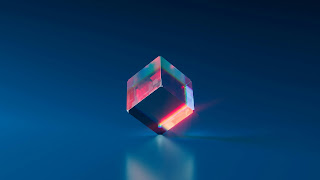From the humble clay-shaped human figures of prehistoric times to the majestic marble and bronze sculptures of antiquity and the Renaissance, the journey of three-dimensional (3D) art is nothing short of awe-inspiring. The artistry of celebrated artists like Michelangelo further enriched this form. Today, 3D art has undergone a remarkable evolution thanks to the transformative power of technology.
The main categories of 3D art are sculptures and statues, installations, and relief art. Artists used clay, metal, and stones to create sculptures and statues to create free-standing pieces. While sculptures and statues have existed since the Ancient Greek and Roman eras, installation art has only existed in the mid-20th century. It is site-specific and allows the viewer to engage with the work directly. For instance, Michael Pinsky and Climart’s Domes is an installation artwork that allows viewers to interact freely with the piece. Finally, relief art is on the exterior of buildings or walls, often on raised or carved surfaces. Also, artists create reliefs for viewers to see from one vantage point.
With that in mind, technology has helped artists improve upon this specific art form. For instance, computer-aided (CAD) design has helped artists and people in other industries draft pictures. CAD has helped improve the productivity of 3D artists and the overall quality of the image or picture being drafted. Some sectors that employ CAD include industrial art used for shipbuilding, architectural design, and aerospace. It is also used in the special effects and computer animation in filmmaking. The prosthetic designs have been done using CAD.
Technology has also simplified sculpting for artists. Blender, ZBrush, and other software enable the artist to create digital clay before creating a piece. In terms of time savings, these tools allow sculptors to create designs to their exact specifications, eliminating mistakes that might happen while sculpting a piece.
Another phenomenal tool that has enhanced 3D art is 3D printing. This form of printing uses CAD to duplicate 3D objects, such as plastics, biological materials, and food. Outside of art, many in this field say that 3D allows users to reproduce objects less expensively than reproducing objects through a traditional manufacturer.
Other places where 3D art has improved through technology are virtual and augmented reality (VR/AR). VR and AR have enhanced 3D by allowing individuals to interact with art virtually. While the environment is simulated, those engaging in a virtual space usually provide the viewer (looking at art) or user with an experience close to one in the real world. Another place where technology has advanced 3D art is graphic design. The advances in graphic design are everywhere, appearing in website design, poster creation, logos, book covers, mobile app interfaces, and infographics.
With that in mind, this revolutionized version of 3D impacts modern life. One of the main impacts is that it can create realistic templates that can assist teams and individuals with better drafting their vision. More importantly, technology-enhanced 3D art has allowed design drafters to create more intricate designs. Furthermore, 3D art technology is versatile, and many industries have adopted 3D art and technology, making creating models more efficient.

